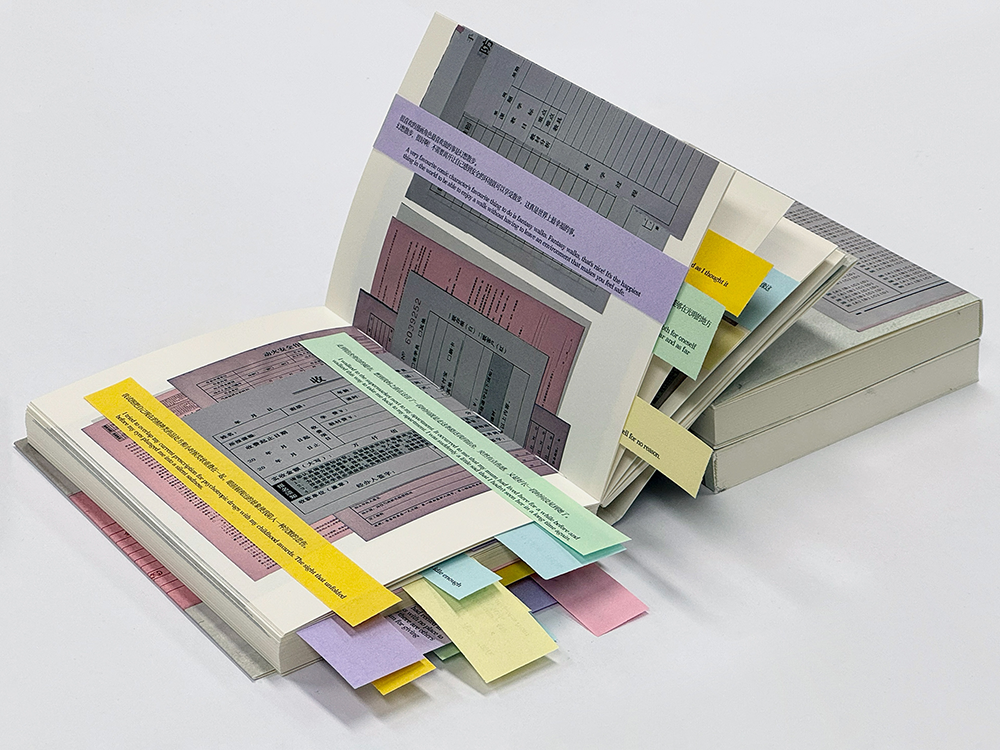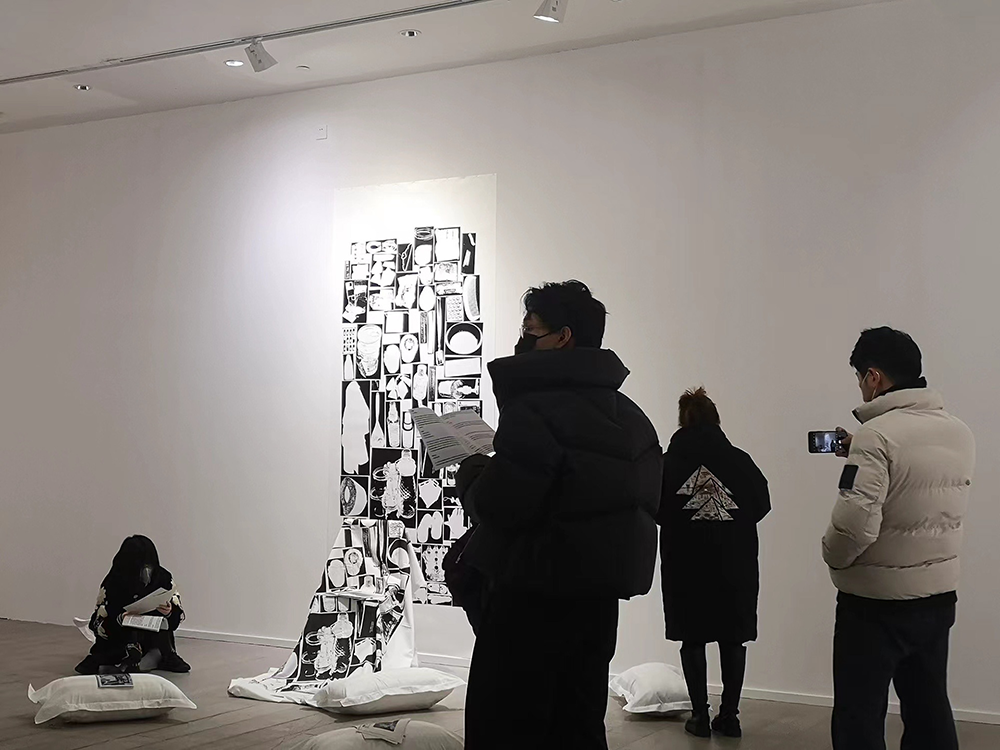Memory is the shortest distance between reality and dreams;
I’m just trying to touch its form in the dark.
Born: China
Now: London, United Kingdom
@cheapball_yunqi | website
INTERVIEW
How has your cross-cultural education, spanning China, Italy, and the UK, influenced your approach to visual communication and art direction?
Graphic designers’ works related to shapes and images are often described in academia and everyday life as “visual language.” Echoing this judgement, my cross-cultural practice background has led me to discover that “visual language” is also culturally particular and requires translation beyond language and text; it is site-specific. Therefore, I try to use a paper-bound medium, the book, as the smallest unit in my practice, to think about visual communication beyond language, based on typography and documented images.

You mention using the book as a central theme in your art. What drew you to explore the “power to interpret books” in your work, and how do you decide on the themes for each project?
Traditionally, books have often been understood as a medium with a certain volume, with multiple collaborators, and with a fixed content and structure. Specifically, books are traditionally printed in large quantities and are subject to a variety of power dynamics, including publishers, markets, and investors. As a result, while traditional books carry content that allows different audiences to develop different understandings, the audience’s understanding is difficult to convey to the author. My practice is based on the historically existing concepts of the ‘artist’s book’ and the ‘fanzine’, and is influenced by my experience of intercultural practice. The “power of interpretation” that I emphasise in my practice is returned to the audience through multi-method communication, which is centred on the creation of the book.

Could you share more about how you approach the “communicative potential” of material narratives? How do you choose materials to complement the stories in your installations?
The communication potential embodied in material narratives is multi-dimensional. Taking the example of books being created and read by an audience, the experience an audience gets from reading a book is unique. There is no way that a book can be touched, felt, and read in the same way by two people, and even if two people are standing in front of the same book, the focus of their attention and the experience that results from reading it will be very different. It is in this process that the diversity and glamour of error in communication is created. In my work, the ‘empathetic metaphor’ is my original method of selecting materials. Specifically, I will use a chair covered with clothes as a metaphor for a lifetime covered with stories, and overlapped translucent paper to simulate fog. The book medium is a parallel world that I realised briefly through my work.

You’ve exhibited widely, from the Tokyo TDC in Berlin to art book fairs across China. Do you notice differences in audience reception across these cultural spaces?
Curators in different cultural environments have different expectations for exhibitions, and therefore attract different audiences. In terms of my experience in different countries, I was pleased to see that some of my fellow Asians were attracted to my bilingual writing. I was also thrilled to see that my graphic language was appreciated by viewers who had no knowledge of Chinese at all. It was almost like an experiment in visual design.

Yunqi, how have awards, like the Tokyo TDC Annual Awards, impacted your artistic practice and visibility in the art world?
Awards are more of a psychological support for me. Although I have a cross-cultural educational background, I recognise my identity as a woman raised in a traditional Asian cultural environment. This identity gives me a sensitive sensibility that I am proud of, while also putting undue mental pressure on me. I seek a sense of identity through awards and social media, and these distant encouragements are more under my control than real conversations. In contrast, the content of my practice will not be entirely guided by awards.

Looking ahead, are there new mediums, themes, or cultural contexts you wish to explore in your practice?
I’ve always been interested in installation art. Although I have done a lot of installations in my past practice, I would like to put my concept of the book into some large format media. Meanwhile, I’m a typeface and graphic designer, so thinking about motion graphics will also be a direction I explore in the future.

What advice would you like to share with young artists?
I’m 26 years old, so I’m not sure I’m qualified to give advice to young artists. But what I very much hope to convey is this:
… those of you who have chosen art or design, no matter how old you are now, never doubt yourself because you find a gap between yourself and others.
I was once as depressed as you are.